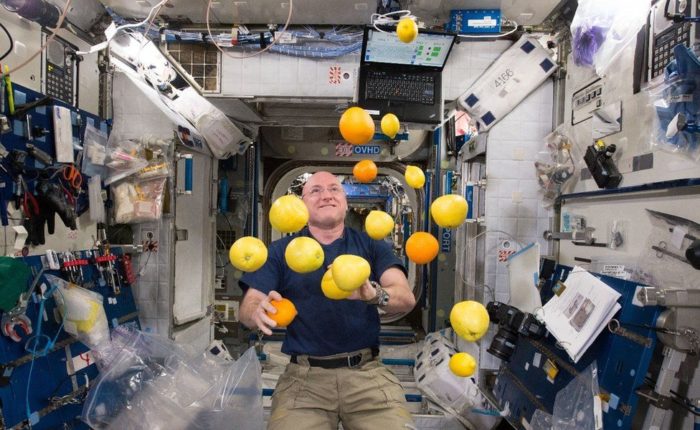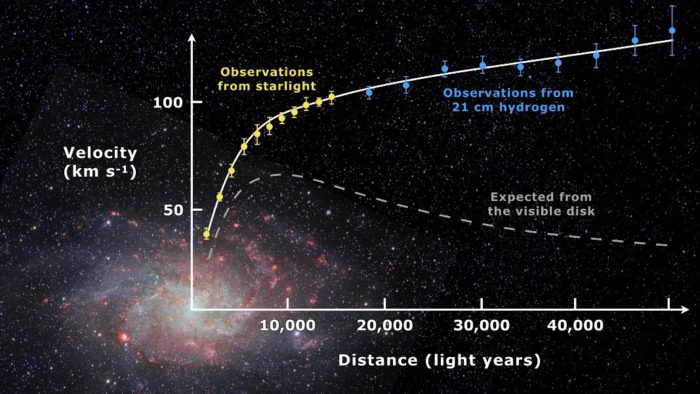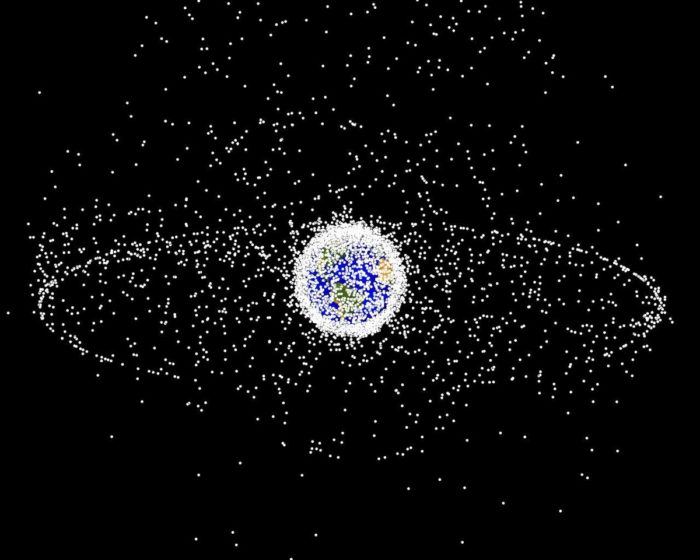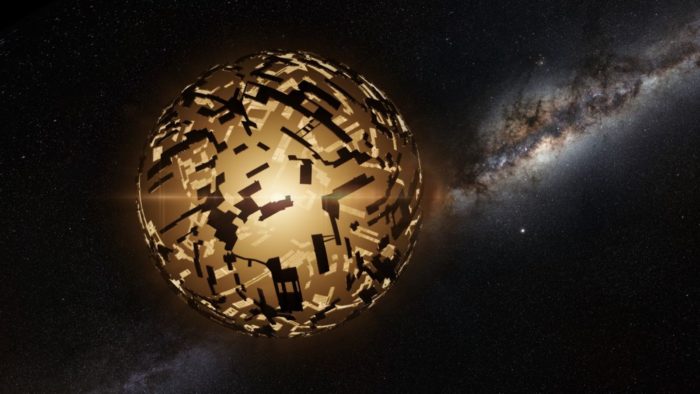Mar
30
2021
 Humans are simply not adapted to space. We evolved in 1G, the amount of gravity near the surface of the Earth, and are well suited to that environment. Spending a lot of time in microgravity, such as aboard the ISS, has a number of physiological effects. Now that some astronauts have been spending long periods of time aboard the ISS, researchers have been better able to understand these effects.
Humans are simply not adapted to space. We evolved in 1G, the amount of gravity near the surface of the Earth, and are well suited to that environment. Spending a lot of time in microgravity, such as aboard the ISS, has a number of physiological effects. Now that some astronauts have been spending long periods of time aboard the ISS, researchers have been better able to understand these effects.
One recent study involved astronaut Scott Kelly, who spent 340 days in the microgravity of ISS. This study involved heart function – the hypothesis was that spending lots of time in orbit would reduce the strain on the heart, because it would no longer have to pump blood against gravity. Over time this would weaken the heart. That is, in fact, what they found. Kelly’s heart lost about 27% of its mass over the 340 days. However, it then regained that mass after months back in normal gravity, readapting to 1G.
What remains to be seen is if there are any long term consequences of losing and then regaining so much heart mass. One concern is that this may change the overall shape and ratio of the atria to the ventricles, and may predispose to atrial fibrillation, an abnormal conduction in the heart.
As an interesting aside, the same study also looked at swimmer Benoît Lecomte who spent 159 days swimming an average of 5.8 hours per day in the Pacific. He also experienced a 25% loss of heart mass. This was due to spending so much time horizontal and floating. This shows that swimming can be a good physiological marker for microgravity, at least for heart function. The study also shows that in both men exercise did not prevent this effect. Astronauts aboard the ISS have a rigorous exercise program to reduce bone and muscle loss, but apparently this did not prevent heart muscle mass loss.
Continue Reading »
Mar
29
2021
 In the 1970s astronomer Vera Rubin was observing the Andromeda galaxy and discovered something very curious. Andromeda is a spiral galaxy, like our own, and spins like a pinwheel. The “spinning” is comprised of all the individual stars (and gas and dust, but the stars are what we can see) revolving around all the mass within their orbit. If you run the numbers, as stars get further away from the galactic center they should revolve more slowly. The relationship between distance from the galactic center and each star’s velocity is called a galactic rotation curve. Rubin and others predicted the curve should be decreasing in a linear fashion (after an initial rise because of the increase in mass at the galactic center).
In the 1970s astronomer Vera Rubin was observing the Andromeda galaxy and discovered something very curious. Andromeda is a spiral galaxy, like our own, and spins like a pinwheel. The “spinning” is comprised of all the individual stars (and gas and dust, but the stars are what we can see) revolving around all the mass within their orbit. If you run the numbers, as stars get further away from the galactic center they should revolve more slowly. The relationship between distance from the galactic center and each star’s velocity is called a galactic rotation curve. Rubin and others predicted the curve should be decreasing in a linear fashion (after an initial rise because of the increase in mass at the galactic center).
What Rubin found, however, was that the rotation curve of Andromeda increased at first as expected but then did not decrease with distance but remained largely flat. This difference between prediction and observation was a genuine anomaly and required an explanation. The results were verified with other large spiral galaxies, and yes, they all have flat rotation curves. The stars on the outskirts of these galaxies, according to Newton, should be flying away. They are moving to fast to be held by the gravity of the galaxy they are orbiting.
Unless…
Perhaps there is more mass in the galaxy than we can observe. There is matter that is not giving off light like stars or even reflecting or glowing from the light of stars like gas clouds. There must be matter we cannot see, some dark matter. How much dark matter would it take to explain the observed rotation curves? Quite a lot – about six times the mass of the stuff we can see. If true, then some 84% of the matter in the universe is dark matter. And we do not know what dark matter is – we don’t know what most of the universe is made of.
Continue Reading »
Mar
26
2021
 Perhaps the biggest scientific, political, and practical challenge facing the world today is how to rapidly decarbonize our energy infrastructure. The goal is to do it fast enough to avoid total global warming in excess of 1.5 degrees Celsius, which we will probably fail to do. At the very least we want to avoid going over 2.0 degrees Celsius, which is more realistic but will still be a challenge. We are not on a path to achieving either goal right now. We are currently at about 1 degree increase over pre-industrial average surface temperature.
Perhaps the biggest scientific, political, and practical challenge facing the world today is how to rapidly decarbonize our energy infrastructure. The goal is to do it fast enough to avoid total global warming in excess of 1.5 degrees Celsius, which we will probably fail to do. At the very least we want to avoid going over 2.0 degrees Celsius, which is more realistic but will still be a challenge. We are not on a path to achieving either goal right now. We are currently at about 1 degree increase over pre-industrial average surface temperature.
There is a lot of healthy debate about what is the best path to net-zero carbon energy, and it’s fascinating to watch. I personally think we should do everything. We don’t want to put our chips down on one answer and find out in 30 years it was the wrong choice. We really have just one shot left to avoid 2.0 C, so we should spread out bets out as much as possible. Also, we should use each source where optimal, rather than try to have one or a few energy sources fit all circumstances. This means investing in renewables, many forms of grid storage, carbon capture, nuclear power, nuclear isotope batteries, artificial leaf technology to make hydrogen, maybe even some biofuel, and improved energy efficiency. One thing is certain – we need to get off fossil fuels as quickly as possible. This also means the transportation sector needs to wean off fossil fuels.
In this debate there are many solar advocates. I, too, am a fan of solar, I just don’t think we should count on solar alone (which would require grid storage we don’t currently have). Solar is currently a cost-effective option, and is only getting better as the technology continuously incrementally improves. The problem is, as we try to push intermittent renewable energy further and further, that cost effectiveness goes away. This is because you need overproduction and/or grid storage, plus significant grid upgrades, to handle the intermittent and distributed nature of sources like solar.
Continue Reading »
Mar
23
2021
 Right now there are about 3,000 active satellites in Earth orbit. About 1,000 of those satellites are part of the Starlink project to provide internet access everywhere on the planet, with a planned 42,000 total when complete. that is a massive increase in the number of active satellites. At the same time there another 3,000 defunct satellites that are no longer operational but remain in orbit. There is about 9,000 tonnes of total orbital debris, and we are tracking 30,000 objects of 10 cm or larger. But estimates are that there are millions of smaller objects in orbit.
Right now there are about 3,000 active satellites in Earth orbit. About 1,000 of those satellites are part of the Starlink project to provide internet access everywhere on the planet, with a planned 42,000 total when complete. that is a massive increase in the number of active satellites. At the same time there another 3,000 defunct satellites that are no longer operational but remain in orbit. There is about 9,000 tonnes of total orbital debris, and we are tracking 30,000 objects of 10 cm or larger. But estimates are that there are millions of smaller objects in orbit.
In other words – usable Earth orbit is becoming crowded and hazardous. This is a risk to operational satellites, space stations, and any spacecraft hoping to get off Earth. Much of this debris is moving very fast relative to other objects with intersecting orbits. A lost bolt could destroy a satellite or punch a hole in the International Space Station (ISS). There is a concern that a serious collision, say between two satellites, would generate enough debris to cause a cascading event of further collisions.
There are now international agreements that make states responsible for anything they put into orbit for its lifetime. Companies and nations are supposed to arrange for the deorbiting of anything they put into orbit within 25 years of the end of its functional lifetime. However, the agreements have little teeth and compliance is low. This is just another example of allowing entities to externalize the costs of their own waste or downstream effects. It is also another example of how the assumption that natural resources are so gigantic we don’t have to worry about sustaining them. Space is really big, so who cares if we leave a lot of junk up there? Well, it took only a few decades for us to clutter low Earth orbit with enough debris to be a serious hazard.
Continue Reading »
Mar
22
2021
 In 1970 robotics professor Masahiro Mori observed, “Bbukimi no tani genshō,” which was later translated into “uncanny valley”. This refers to an observed phenomenon (first in robots, but also applies to digital recreations) that the more human-like the robot the greater the emotional affinity of people. However, as imitation approaches complete imitation it takes a sharp dip where people actually become uneasy and even revulsed by the not-quite-human face, before going up again as perfection is achieved. That dip in emotional affinity for near human imitation is the uncanny valley. Both roboticists and digital artists have been trying to break through that valley every since it was identified.
In 1970 robotics professor Masahiro Mori observed, “Bbukimi no tani genshō,” which was later translated into “uncanny valley”. This refers to an observed phenomenon (first in robots, but also applies to digital recreations) that the more human-like the robot the greater the emotional affinity of people. However, as imitation approaches complete imitation it takes a sharp dip where people actually become uneasy and even revulsed by the not-quite-human face, before going up again as perfection is achieved. That dip in emotional affinity for near human imitation is the uncanny valley. Both roboticists and digital artists have been trying to break through that valley every since it was identified.
Perhaps the most notorious example of this phenomenon in modern popular culture is the CG portrayal of Tom Hanks in the movie Polar Express. There is something dead about his eyes, which gives him the eerie appearance of an animated corpse. Even the most advanced current CG does not quite break through, but it’s getting damn close.
There are two neurological phenomena at work here. The first, as I have discussed before, is agency detection. Our brains divide the world into things with agency (the ability to act of their own will) and things without. Our brains are wired to then network our perception of things with agency to the limbic system and assign some emotional significance to them. This is why we feel something about our pets but not about a rock. Of course this is an oversimplification, because our brains are massive parallel processors with many circuits all working at the same time. But this is definitely a fundamental component that explains a lot about our reaction to certain things. This concept has even been pushed to the limits – in 1944 researchers made a video of simple two-dimensional shapes interacting with each other on a screen. Subjects spontaneously imbued these shapes with agency and provided elaborate interpretations of their actions and motivations. (A triangle is about as far away from the uncanny valley in the other direction as you can get.)
Neurologically we can see why we have no problem identifying with cartoon characters, responding to their personality, and even getting invested in their story. Added to this is the brain wiring behind seeing faces and reading emotion. This too can be stripped down to basic components – which is why we can interpret emoji’s. Cartoonists learn how to convey a range of emotions with a few lines. This in turn is partly due tot he fact that we have a large area of our visual cortex dedicated to processing information about human faces. Even infants will prefer to look at a human face over other stimuli. We also have a tendency to construct visual stimuli as a face – which is why we can see faces everywhere, such as in low-res images from the surface of Mars, or in the bark of a tree.
Continue Reading »
Mar
18
2021
 In 2017 astronomers spotted a very unusual object approaching Earth. What was most unusual about it was that it was on a trajectory that would take it out of the solar system. Given its path it could only have come from outside the solar system – our first ever discovered extrasolar visitor, named Oumuamua. For an extrasolar object, it came improbably close to the Earth and the Sun, which gave us a great opportunity to take a close look at it. And then, as it passed by the sun and headed out of the solar system it became even more unusual. First, we could see that it was an very long and flat object, not typical for a comet or asteroid. Second it accelerated as it moved away from the sun, like a comet would from sublimation of ice into gas acting like a rocket. But we could not see a comet-like tail, and the albedo was off. Curiouser and curiouser.
In 2017 astronomers spotted a very unusual object approaching Earth. What was most unusual about it was that it was on a trajectory that would take it out of the solar system. Given its path it could only have come from outside the solar system – our first ever discovered extrasolar visitor, named Oumuamua. For an extrasolar object, it came improbably close to the Earth and the Sun, which gave us a great opportunity to take a close look at it. And then, as it passed by the sun and headed out of the solar system it became even more unusual. First, we could see that it was an very long and flat object, not typical for a comet or asteroid. Second it accelerated as it moved away from the sun, like a comet would from sublimation of ice into gas acting like a rocket. But we could not see a comet-like tail, and the albedo was off. Curiouser and curiouser.
This lead some to speculate wildly that Oumuamua may be an alien artifact, most famously Avi Loeb, a Harvard scientist who has now even published a book – Extraterrestrial: The First Signs of Intelligent Life Beyond Earth. This is a clear case of the “aliens of the gap” fallacy – any astronomical phenomenon we do not currently fully understand must be evidence of alien technology. Of course, all natural explanation must first be excluded. But even then, we don’t have aliens, we have an unknown phenomenon that needs further exploration.
Oumuamua is now yet another great case in point. Two Arizona State University astrophysicists, Steven Desch and Alan Jackson, have come up with a plausible explanation for Oumuamua’s funky properties. Perhaps, they hypothesized, our attempts so far to explain the object’s behavior and properties failed because we were making false assumptions about what kind of ice it might contain. We assumed it would have a profile of ice similar to the comets we know. But what if the ice is made of something else, because Oumuamua is not a typical comet. When they looked at the properties of nitrogen gas – bingo. This would nicely fit the data, including the combination of the rate of acceleration from ice sublimation near the sun and the low albedo – not as much reflective ice would have been necessary to cause the acceleration.
Continue Reading »
Mar
16
2021
 How absorbed to you become when you read fiction? How immersed in the world, how connected to the story, and how much do you identify with specific characters? More importantly (from a neuroscientists point of view), what is happening in your brain when all this going on?
How absorbed to you become when you read fiction? How immersed in the world, how connected to the story, and how much do you identify with specific characters? More importantly (from a neuroscientists point of view), what is happening in your brain when all this going on?
A recent study brings all this into focus, looking at fMRI activity while people think about themselves, their close friends, and fictional characters from a popular work of fiction, the Game of Thrones saga. Prior research shows that when we think about ourselves, or access autobiographical information, a particular part of the brain becomes active – the ventral medial prefrontal cortex (vMPFC). When this part of the brain is damaged people have impaired ability to access autobiographical information.
Always I have to add the caveat that the human brain is a complex mesh of different networks producing any end-result. It is difficult, to say the least, to tease apart all these components, especially for any higher-level function. But we can get a glimpse into some specific components that influence specific brain functions in order to flesh out our neurological map. With that said – what did the study find?
They looked at activation of the vMPFC when subjects thought about themselves, about 9 of their close friend, and about 9 characters from Game of Thrones. Not surprisingly, the activation was greatest for the self, least for the fictional characters, and intermediate for close friends (on average). It was known from prior research that we respond neurologically to close friend more similarly to ourselves, so this was not surprising. I will get into why this may be in a bit.
Continue Reading »
Mar
15
2021
 I have been following the development of virtual and augmented reality (VR and AR), writing about it here occasionally. I have a VR headset and use it regularly (I am currently playing Myst VR – very nice). I don’t use it exclusively not even for gaming, some games are better on a usual screen and some are better in VR. My only gaming experience with AR is Pokemon on my cellphone (probably like most people). It was fun for a short period but the novelty wore off fast. This is not a knock against AR, I just think the cellphone version is limited.
I have been following the development of virtual and augmented reality (VR and AR), writing about it here occasionally. I have a VR headset and use it regularly (I am currently playing Myst VR – very nice). I don’t use it exclusively not even for gaming, some games are better on a usual screen and some are better in VR. My only gaming experience with AR is Pokemon on my cellphone (probably like most people). It was fun for a short period but the novelty wore off fast. This is not a knock against AR, I just think the cellphone version is limited.
Now Microsoft is pushing their Mesh network on their Hololens device, which represents “mixed” reality – what’s that? The term “mixed reality” was coined in a 1994 paper about a range of technologies including VR and AR. MR, essentially exists along a spectrum including physical and virtual elements, and the ability to interact with those virtual elements and project yourself into the virtual world.
For background, VR involves total immersion, wearing a headset that occupies your entire vision so you only see the virtual world. AR, rather, overlays digital elements onto the real world, which you still see. The Pokemon version I referenced uses your cellphone’s camera to take realtime video of the world and places digital elements within them – so you only see the Pokemon critters on your screen, like looking through a lens at the virtual world. The far better version of AR would be wearing transparent glasses that display the virtual elements so you see the virtual world overlaid on top of the real world.
Mixed reality, like the Mesh network, can accommodate VR, AR, and regular screen use at the same time. We are at the very beginning of this technology with lots of people making predictions about how they will be used, and that’s what I want to talk about. Currently the Holo lens costs almost $5k, so this is just dipping into the prosumer market. The general consumer market for high-tech devices is generally considered to be sub-$1,000, so we have a ways to go. One of the primary “killer apps” for mixed reality is collaboration, so how widespread the adoption is matters. That’s why it is common now for virtual spaces to be accessible on regular flat monitors, as a bridge to MR adoption.
Continue Reading »
Mar
12
2021
 The discovery and exploration of exoplanets over the last three decades has been an exciting addition to astronomy. In 1990 we knew of no planets outside our solar system, and now there are more than 4,000 confirmed exoplanets, and thousands of more candidates awaiting confirmation. This is still just a tiny sample of the planets even in our small corner of the galaxy. One of the questions going into this enterprise was – how typical are the planets we know in our own system, and also how typical is our system in terms of the number and arrangement of planets? So far the answer seems to be that there is no typical. We are finding all kinds of planets in all kinds of arrangements.
The discovery and exploration of exoplanets over the last three decades has been an exciting addition to astronomy. In 1990 we knew of no planets outside our solar system, and now there are more than 4,000 confirmed exoplanets, and thousands of more candidates awaiting confirmation. This is still just a tiny sample of the planets even in our small corner of the galaxy. One of the questions going into this enterprise was – how typical are the planets we know in our own system, and also how typical is our system in terms of the number and arrangement of planets? So far the answer seems to be that there is no typical. We are finding all kinds of planets in all kinds of arrangements.
We can now add, potentially, one additional planetary phenomenon to the list – a planet with an apparent secondary atmosphere. The planet is GJ 1132 b and is 41 light years away (in naming convention the star itself has the designation “a” and so “b” is the first planet discovered in the system). This is a red dwarf star, and the planet is very close, so close that it is tidally locked, meaning the same side faces the star at all times. It’s year is only a day and a half. Planets this close to their parent stars will tend to have their atmospheres stripped by the heat and solar wind from the star.
Astronomers believe that GJ 1132 b was once a subNeptune – a planet with a rocky core about the size of Earth, but a thick hydrogen-helium atmosphere making it a gas giant. But soon after formation that atmosphere would have been blown away, leaving behind the rocky core. So astronomers expected to see little to no atmosphere on GJ 1132 b, and instead they find evidence of an atmosphere about as thick as Earth’s. This and other evidence has led them to believe this is a secondary atmosphere.
Stars tend to be hotter when they are very young and then cool down a bit. Red dwarfs change even more. They are unstable when young, giving off lots of coronal mass ejections, constantly blasting any nearby planets. This does not bode well for the prospect of life on any such planets. Unfortunately, any planet in the habitable zone is also in this blast radius and would have its atmosphere stripped. Red dwarfs are the most common star type in the galaxy, making up 70% of the stars, so this has implications for the probability of life in the galaxy.
Continue Reading »
Mar
11
2021
 Recently experts gathered online for a digital conference in which they discussed possibilities for detecting signs of alien technological civilizations – so called “technosignatures”. Being an enthusiast, I have heard of many of these before, but there were a lot of new ideas coming out of that meeting as well. Here is the preprint, with all the technical information. I think collectively this is a compelling case for NASA and other agencies to include the search for technosignatures as a part of their mission.
Recently experts gathered online for a digital conference in which they discussed possibilities for detecting signs of alien technological civilizations – so called “technosignatures”. Being an enthusiast, I have heard of many of these before, but there were a lot of new ideas coming out of that meeting as well. Here is the preprint, with all the technical information. I think collectively this is a compelling case for NASA and other agencies to include the search for technosignatures as a part of their mission.
The most obvious technosignature is radio signals, most likely deliberately broadcast, either out into the universe or even directed at Earth (if they have detected our own technosignatures). This is the object of SETI (The Search for Extraterrestrial Intelligence). NASA briefly funded a SETI project, but then pulled funding. The effort continues, however, with other funding. I have interviewed Seth Shostak from SETI several times and he makes a couple of points worth emphasizing here. One is that SETI is simultaneously doing a lot of non-SETI astronomy. They are essentially doing radio astronomy but looking at any data in such a way that it could detect an alien signal.
The members of the recent meeting also considered what they call “synergies” or ancillary benefits for each of the techniques they discuss. This is critical, I think, because it means even if we never detect an alien technosignature, the effort would not have been wasted. We will have accomplished a lot of meaningful astronomy in the meantime. I would argue it wouldn’t be wasted in any case – negative results from an experiment are still results. We would have gathered lots of data about how rare technological civilizations are in the universe. But if you look at the table of discussed techniques in the paper, each one has a listed potential synergy. In fact, they also list existing astronomical data that can be searched for technosignatures.
Seth also pointed out that if we did detect an alien message hiding in radio signals, we would very likely not be able to read it. This is because radio signals get weaker with distance, and at some point they would be lost in the background radio noise. The more powerful the initial radio signal, the greater its range. The current authors call this the “cosmic footprint” of each technosignature, and coin the term “ichnoscale” to measure it. For example, they give radio astronomy a 10 kpc (kiloparsec) ichnoscale for detecting alien signals.
Continue Reading »
 Humans are simply not adapted to space. We evolved in 1G, the amount of gravity near the surface of the Earth, and are well suited to that environment. Spending a lot of time in microgravity, such as aboard the ISS, has a number of physiological effects. Now that some astronauts have been spending long periods of time aboard the ISS, researchers have been better able to understand these effects.
Humans are simply not adapted to space. We evolved in 1G, the amount of gravity near the surface of the Earth, and are well suited to that environment. Spending a lot of time in microgravity, such as aboard the ISS, has a number of physiological effects. Now that some astronauts have been spending long periods of time aboard the ISS, researchers have been better able to understand these effects.
 In the 1970s astronomer
In the 1970s astronomer  Perhaps the biggest scientific, political, and practical challenge facing the world today is how to rapidly decarbonize our energy infrastructure. The goal is to do it fast enough to avoid total global warming in excess of 1.5 degrees Celsius, which we will probably fail to do. At the very least we want to avoid going over 2.0 degrees Celsius, which is more realistic but will still be a challenge. We are not on a path to achieving either goal right now. We are currently at about 1 degree increase over pre-industrial average surface temperature.
Perhaps the biggest scientific, political, and practical challenge facing the world today is how to rapidly decarbonize our energy infrastructure. The goal is to do it fast enough to avoid total global warming in excess of 1.5 degrees Celsius, which we will probably fail to do. At the very least we want to avoid going over 2.0 degrees Celsius, which is more realistic but will still be a challenge. We are not on a path to achieving either goal right now. We are currently at about 1 degree increase over pre-industrial average surface temperature. Right now there are about 3,000 active satellites in Earth orbit. About 1,000 of those satellites
Right now there are about 3,000 active satellites in Earth orbit. About 1,000 of those satellites  In 1970 robotics professor Masahiro Mori observed, “Bbukimi no tani genshō,” which was later translated into “uncanny valley”. This refers to an observed phenomenon (first in robots, but also applies to digital recreations) that the more human-like the robot the greater the emotional affinity of people. However, as imitation approaches complete imitation it takes a sharp dip where people actually become uneasy and even revulsed by the not-quite-human face, before going up again as perfection is achieved. That dip in emotional affinity for near human imitation is the uncanny valley. Both roboticists and digital artists have been trying to break through that valley every since it was identified.
In 1970 robotics professor Masahiro Mori observed, “Bbukimi no tani genshō,” which was later translated into “uncanny valley”. This refers to an observed phenomenon (first in robots, but also applies to digital recreations) that the more human-like the robot the greater the emotional affinity of people. However, as imitation approaches complete imitation it takes a sharp dip where people actually become uneasy and even revulsed by the not-quite-human face, before going up again as perfection is achieved. That dip in emotional affinity for near human imitation is the uncanny valley. Both roboticists and digital artists have been trying to break through that valley every since it was identified. In 2017 astronomers spotted a very unusual object approaching Earth. What was most unusual about it was that it was on a trajectory that would take it out of the solar system. Given its path it could only have come from outside the solar system – our first ever discovered extrasolar visitor,
In 2017 astronomers spotted a very unusual object approaching Earth. What was most unusual about it was that it was on a trajectory that would take it out of the solar system. Given its path it could only have come from outside the solar system – our first ever discovered extrasolar visitor,  How absorbed to you become when you read fiction? How immersed in the world, how connected to the story, and how much do you identify with specific characters? More importantly (from a neuroscientists point of view), what is happening in your brain when all this going on?
How absorbed to you become when you read fiction? How immersed in the world, how connected to the story, and how much do you identify with specific characters? More importantly (from a neuroscientists point of view), what is happening in your brain when all this going on? I have been following the development of virtual and augmented reality (VR and AR),
I have been following the development of virtual and augmented reality (VR and AR),  The discovery and exploration of exoplanets over the last three decades has been an exciting addition to astronomy. In 1990 we knew of no planets outside our solar system, and now there are
The discovery and exploration of exoplanets over the last three decades has been an exciting addition to astronomy. In 1990 we knew of no planets outside our solar system, and now there are  Recently experts gathered online for a digital conference in which they discussed possibilities for detecting signs of alien technological civilizations – so called “technosignatures”. Being an enthusiast, I have heard of many of these before, but there were a lot of new ideas coming out of that meeting as well.
Recently experts gathered online for a digital conference in which they discussed possibilities for detecting signs of alien technological civilizations – so called “technosignatures”. Being an enthusiast, I have heard of many of these before, but there were a lot of new ideas coming out of that meeting as well. 




